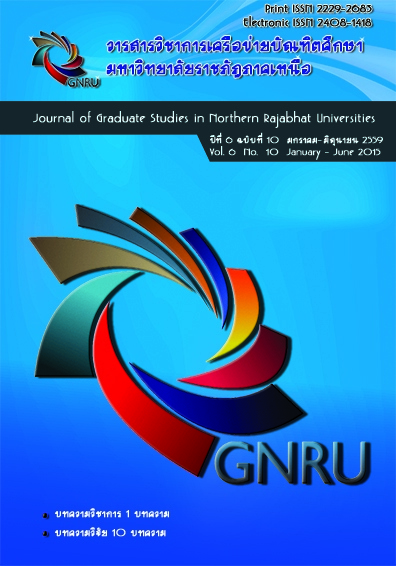The Effects of Project Approach on Observation, Classfication and Comparison of Preschool Children
Main Article Content
บทคัดย่อ
Abstract
The purposes of this research were. 1) to compare the number of preschool children being learned by the project approach who obtained 75 percent of total scores with75 percent criterion, and 2) to compare observation, classification and comparison of preschool children being learned by the project approach after and before learning. The sample of this study was 13 second year kindergarten students in the second academic year 2014, Bantawaritpantuek School under the office of education service area of Nakronsawan, Region 3. The sample was selected by cluster random sampling.The research instruments used were: 1) the project based on learning lessen plans 2) the test on observation, with degree of difficulty from 0.55-0.74, the discrimination power from 0.25-0.45, and reliability coefficient at 0.93, the test on classification, with degree of difficulty from 0.52-0.71, the discrimination power from 0.24-0.68, and reliability coefficient at 0.86 and the test on comparison, with degree of difficulty from 0.51-0.71, the discrimination power from 0.24 0.63, and reliability coefficient at 0.77
The research findings were as follows:
1. The preschool children being learned by the project approach learning had observation, classification andcomparison passed the criterion score of 75 percents of total scores at the .05 level of significance.
2. The preschool children being learned by the project approach learning had observation, classification and comparison a higher score in the posttest than that in the pretest at the .05 level of significance.

